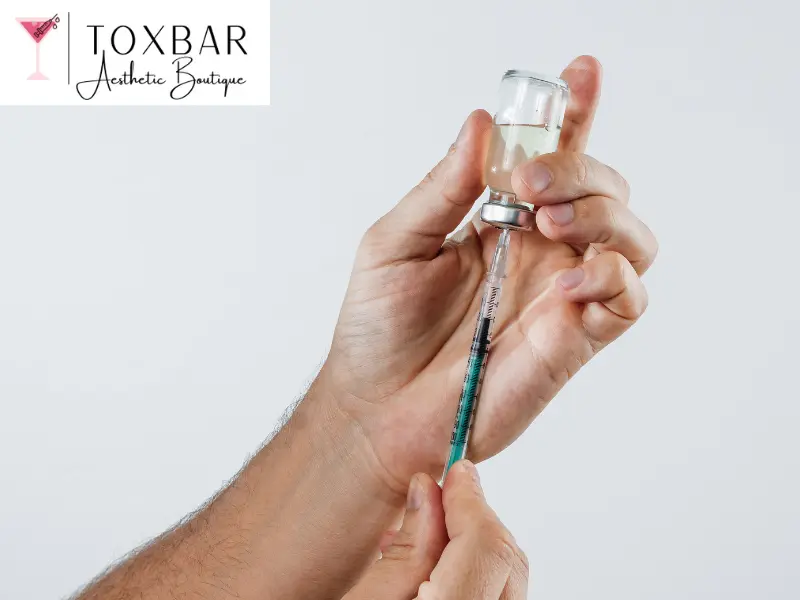Is Botox Safe? Understanding the Potential Side Effects
Botox, a popular cosmetic treatment, has gained widespread acceptance for its ability to reduce the appearance of wrinkles and fine lines. However, many potential clients often wonder about its safety and the possible side effects. In this blog post, we will explore the safety of Botox, delve into its side effects, and provide a comprehensive overview based on reliable information.
What is Botox?
Botox is a brand name for botulinum toxin type A, a neurotoxin produced by the bacterium Clostridium botulinum. While it is commonly associated with cosmetic procedures, Botox has several medical applications, including treating chronic migraines, excessive sweating, and certain muscle disorders. The FDA approved Botox for cosmetic use in 2002, and since then, it has become one of the most sought-after aesthetic treatments.
How Does Botox Work?
Botox works by temporarily blocking the signals from the nerves to the muscles. When injected into specific facial muscles, it causes a temporary reduction in muscle activity, leading to a smoother appearance of the skin. The effects typically last for three to six months, after which repeat treatments are needed to maintain results.
Is Botox Safe?
When administered by a qualified and experienced professional, Botox is generally considered safe. However, like any medical procedure, it carries some risks. Understanding these risks is crucial for anyone considering Botox injections.
Factors Influencing Safety
- Qualified Practitioner: The most significant factor in the safety of Botox is the skill and experience of the injector. It is essential to choose a licensed practitioner, such as those at ToxBar, who specializes in neurotoxin treatments.
- Patient Health: Individual health conditions can affect the safety of Botox. Patients with certain neurological disorders or those who are pregnant or breastfeeding should consult their healthcare provider before receiving Botox injections.
- Dosage and Technique: The amount of Botox used and the technique employed during the injection can influence safety and efficacy. Follow-up consultations are also important to assess results and make necessary adjustments.
Potential Side Effects of Botox
While many people experience little to no side effects, some may encounter mild reactions. Here are the most common side effects associated with Botox:
1. Injection Site Reactions
The most common side effects occur at the injection site. These can include:
- Redness: Mild redness may appear immediately after the injection but usually subsides quickly.
- Swelling: Some swelling can occur, often resolving within a few hours.
- Bruising: Bruising at the injection site is possible, particularly if you have a tendency to bruise easily.
2. Headaches
Some patients report experiencing headaches following Botox injections. While these headaches are typically mild and resolve within a few days, they can be uncomfortable.
3. Drooping Eyelids or Brows
In rare cases, Botox can lead to drooping eyelids or brows, especially if the product spreads beyond the intended area. This side effect is usually temporary and can last a few weeks.
4. Dry Mouth or Eyes
Some individuals may experience dry mouth or dry eyes after treatment. These symptoms are generally mild and can be managed with over-the-counter remedies.
5. Allergic Reactions
Though rare, some individuals may have an allergic reaction to Botox. Symptoms can include itching, rash, or difficulty breathing. Anyone experiencing these symptoms should seek immediate medical attention.
6. Flu-like Symptoms
Some patients report experiencing flu-like symptoms, including fatigue, muscle weakness, or mild fever after receiving Botox. These symptoms are usually short-lived.
7. Nausea
Nausea is another potential side effect, although it is not very common. It typically resolves on its own within a short period.
Long-Term Safety Considerations
Is Botox Safe? Long-term studies suggest that Botox is safe for repeated use over several years. However, potential patients should remain aware of any changes in their health and communicate with their practitioner about any concerns.
Making an Informed Decision
When considering Botox, it’s essential to:
- Consult a Professional: Schedule a consultation with a qualified practitioner (like those at ToxBar) to discuss your goals, medical history, and any concerns you may have about the procedure.
- Understand the Risks: Being informed about the potential side effects can help you make a more educated decision about whether Botox is right for you.
- Follow Aftercare Instructions: Adhering to post-treatment care instructions is crucial for minimizing side effects and achieving optimal results.
Conclusion
Botox is a widely used and generally safe treatment option for reducing wrinkles and enhancing facial aesthetics. While side effects can occur, they are often mild and temporary. By choosing a skilled practitioner and understanding the procedure’s risks, you can enjoy the benefits of Botox with greater confidence. If you’re considering Botox in Northern Kentucky, the expert team at ToxBar is here to guide you through the process, ensuring you look and feel your best.
For more information or to schedule an appointment, feel free to contact ToxBar at 859-512-1868. Your journey to a more confident you starts here!
Blog by Foster Group

